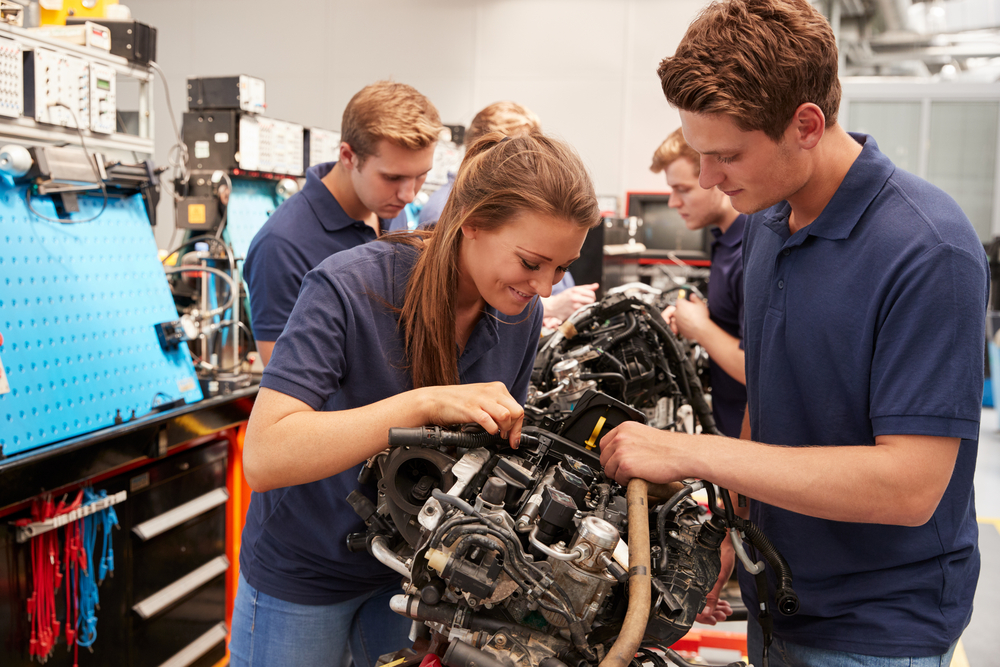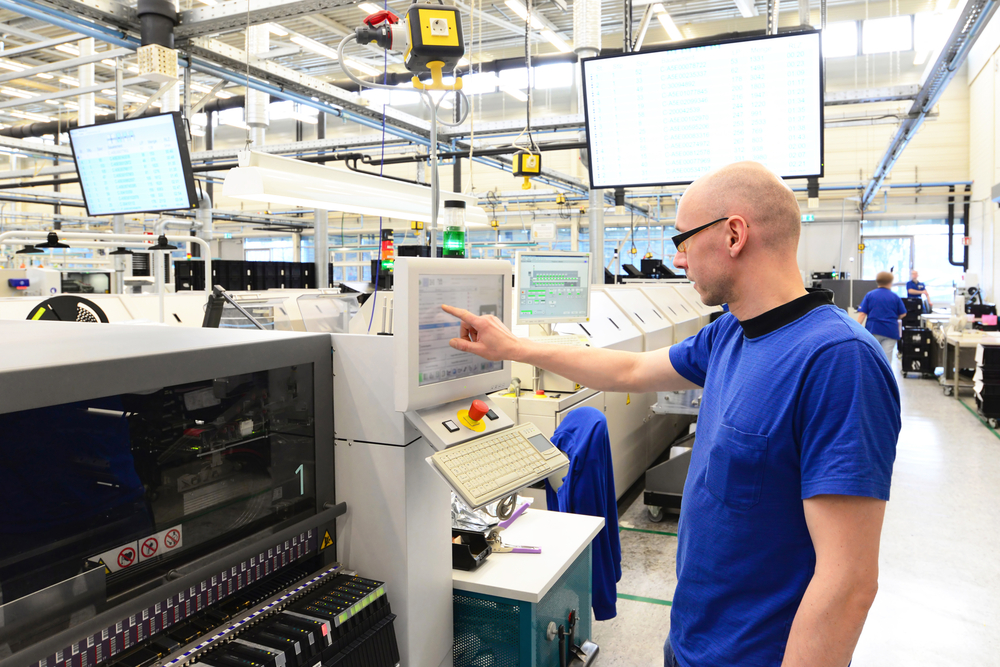
Workforce is a big word.
It may be only nine letters, but it still ranks as the undisputed heavyweight champ of the economic development vocabulary.
Why? Because economies are powered by people.
People start companies. Some of those companies succeed and grow. And then those growing companies employ even more people.
The process kicks off a chain reaction which can raise revenues and boost overall quality of life.
But that happy ending is impossible without human beings.
Just ask any of the corporate executives and site selection consultants surveyed by Area Development magazine over the past three decades. Their Annual Corporate Survey has always shown that the need for available skilled labor was important to those contemplating relocation or expansion.
But in the last few years, “access to talent” has shot to the top of the list of factors driving site selection decisions. In the latest survey, it ranks second for corporate executives and tops the list for site selection consultants.
When it comes to attracting companies, cities and counties can shout all day about incentives, infrastructure and available commercial real estate. But without a robust workforce, nobody is going to listen.
Thankfully, there are a few simple routines that will help you press, crunch and curl your workforce muscles into shape.
But before we get to the exercises, let’s take a quick trip back to grade school.

It’s recess on the playground.
Time to pick teams for kickball. You’re standing in a cluster of kids trying to catch the eyes of the two captains.
One by one, the cluster gets smaller.
Your expression goes from hopeful to worried to panicked. Almost everyone is gone, but you don’t care. All you want now is to be called out before it’s too late.
Second to last is fine. But last? No way.
Nobody wants to be picked last.
Not in kickball and not in economic development.
Those kids that got picked first? They had skills. They could kick, they could run or they could throw. Whatever it was, the captain who called them over knew that they would help build a strong team. Choosing them increased the odds of winning.
The quickest way to collect wins in economic development is by having a deep bench. A sizable, diverse, highly skilled workforce.
Workforce is such a big deal that it gets tackled from two sides.
In one corner, you have economic development. The key focus of economic development is to encourage business growth and help create jobs.
In the other corner? Workforce development.
Workforce development focuses on people to ensure that they have the education, skills, and training needed to obtain jobs.
Workforce development organizations and local workforce development boards take more of a holistic, human-resources approach, providing everything from soft skills training (teamwork, communication, time-management) and industry-specific skills to removing practical barriers to employment (transportation issues, literacy, child care).
The more economic development and workforce development can work together, the better the result for the community. Collaboration between the two can only lead to lower unemployment, higher quality of life and a much more attractive talent pool.
But here’s one important thing to remember…
Luring outside companies isn’t the only reason to build a stronger workforce. Your county or city doesn’t have to be competing for the next big auto manufacturing plant or an Amazon distribution center for it to make sense.
Transforming your talent pool into a lean, mean, working machine has immediate benefits for your community… even if a Fortune 500 never comes knocking.
Enough talk. Time to get going with some exercises designed to build up the “core strength” of any workforce-boosting effort.
As always, remember to lift with your legs.

If it’s true that “knowledge is power,” this is one of the most awesome exercises in your arsenal. Educate, educate, educate.
What we call “work” in America is changing every day. Recent events have only reinforced that fact. Your workforce needs to adapt or get left behind. That’s why learning professional skills should start early and never stop.
Get a head start. The trick is to build a long runway, giving students options, opportunity and time to build momentum. That means incorporating plenty of STEM programs in elementary and middle schools.
Offer the path less taken. In high school, make it easy for graduating seniors to think outside the 4-year-college box. Connect schools and students to in-demand careers in the professional trades with apprenticeships and specialized training.
Never stop learning. Outside of the classroom, highlight educational opportunities for adults who are looking to switch careers, start a second career or transition from military service.

Nothing builds talent faster than teaming up with a partner.
Every group in your community has a common goal: to make life better. Working together helps solve problems faster. It lightens the burden. And it brings to light new ideas that would have been overlooked.
Collaborate often. Partnerships build progress. Nothing is more valuable than a network.
Hire higher education. Colleges and universities are an economic developers best friend. Keep them close and bring them into every loop. Not only are they cultivating the next generations of bright young talent, but they offer an unbelievable connection to the community.
Recruit the government. National, state and local government organizations are gold mines of opportunity. You can find everything from grant money, industry training and registered apprenticeships.
Keep it local. Nobody knows your local job market like your community businesses. Size doesn’t matter. Small. Medium. Large. They all need employees. Understand what (or who) they need. Is there a local furniture manufacturer looking for skilled workshop help? A small machine shop getting ready to bid on a big job? Those are prime opportunities to help a local business grow.

Don’t be afraid to try something new.
If you’ve stepped inside a gym lately, you know they’ve come a long way from barbells and medicine balls. Fitness centers are full of high-tech machines and funky objects like kettlebells and monster truck tires.
That’s because workouts are boring. Nobody likes going through the same old routine.
The same rules apply to building your workforce.
Get back to the future. There’s a reason that Wayne Gretsky’s most famous quote is so famous. Ignoring “where the puck is” and figuring out “where the puck is going to be” worked out pretty good for The Great One. You can strengthen your local workforce by helping guide them towards the skills, industries and business trends waiting over the horizon.
Embrace technology. I’m no expert, but it seems like this internet thing is here to stay. Embrace the possibilities presented by technology in life and in the workplace. Learn to highlight opportunities where others might see doom and gloom.
Here’s a good example: Experts say that as much as 60% of manufacturing jobs could become automated. BUT... that process could take decades and companies will still need people to manage those automated processes.
Rethink people. Innovation isn’t limited to robots and computers. As we established earlier: workforces are made of people. That means all kinds of people, with different skills and experiences from different generations. Truly successful workforce efforts will learn how to incorporate all of them into the future economy.
This includes finding innovative opportunities for seniors, retirees and veterans. It means creating ways for the generations to come together: boomers, Gen X, millennials and everyone before, after and in between.
You don’t need to break a sweat.
Just think of these exercises as a mantra.
Use them as a regular reminder to “always be helping” when it comes to workforce development.
Educate. Collaborate. Innovate.
Show up and do the work. Rest and repeat. And always remember to hydrate.
If you’re patient and persistent, you’ll see results... and so will your economy.
These Stories on Economic Development
No Comments Yet
Let us know what you think